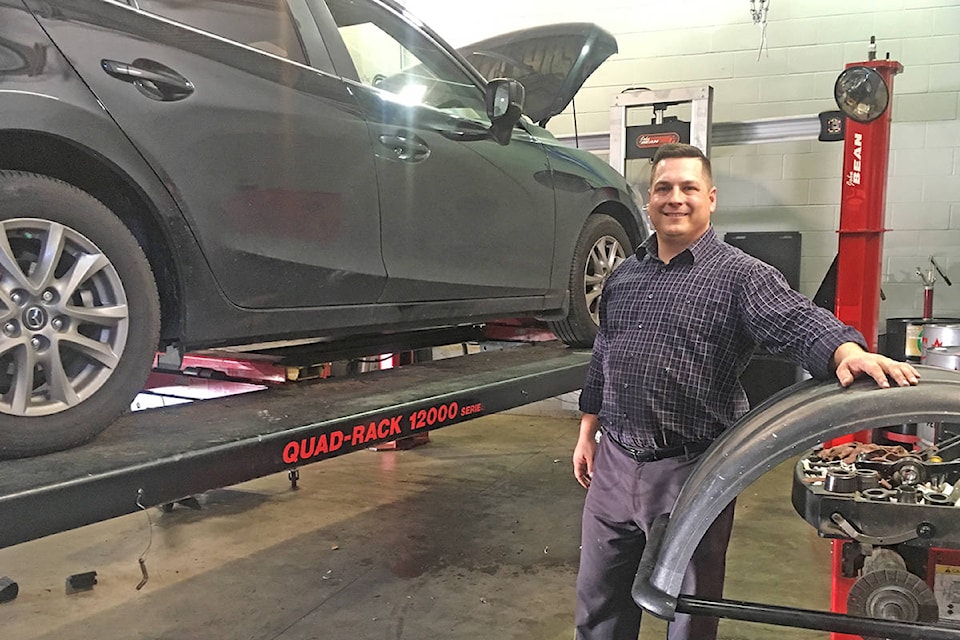With October’s winds and rains blowing up a storm, chilly temperatures will be close behind.
In fact, that danger zone for tires – when temperatures drop below 7°C – is already here and with it, winter tire requirements.
“As the weather drops below 7°C, the rubber on normal all-seasons becomes very hard and doesn’t grip as well,” explains Corey Sawchuk, from Courtenay Mazda. “The rubber on the winter tires stays more pliable, improving the traction and handling in winter conditions.”
- Because winter road conditions often include snow and ice, B.C.’s winter tire and chain-up rules are in place throughout the province – including Vancouver Island – from Oct. 1 to March 31.
- What tires are acceptable? B.C. accepts tires displaying the three-peaked mountain and snowflake symbol or the M+S (mud and snow) symbol, with at least 3.5 mm tread as winter tires.
- True winter tires – bearing the mountain and snowflake symbol – offer the best traction for snow, ice and cold weather. ICBC says those living in an area that regularly receives snow or who often drive to winter sports should outfit their vehicle with four mountain/snowflake winter tires.
- Tires bearing the mud and snow symbol offer better traction than summer or all-season tires but are less effective than snow tires for snow, ice and cold weather, Sawchuk says.
- Regardless of the symbol, tires must have at least 3.5mm of tread remaining to be considered winter tires.
- Along with specially formulated rubber, winter tires also feature tread designs made specifically for ice, snow and other severe winter conditions, and reduce snow build-up, notes Goodyear Tire.
- Proper air pressure is also key for driving safety, handling and traction – and extending tire life. Refer to the inflation level recommended by your vehicle manufacturer, usually in the owner’s manual, on the driver’s door or inside the glove box. Tire pressure decreases as temperatures drop, so check the pressure at least monthly, when tires are cold.
- Chains can enhance traction on winter tires, but chains on summer tires are not an acceptable substitute for winter tires on signed highways, the province notes. Additionally, four-wheel-drive or all-wheel-drive vehicles still need winter tires on the front and back to stay safe in the elements, say the Michelin tire professionals.
- While driving without winter tires won’t void your insurance if you have a claim, and won’t mean you’re automatically at fault in a crash, if involved in a crash where winter tires could have helped, not having them may affect whether – or how much – you’re at fault, ICBC says.
- Increase tires’ longevity with proper storage: in a cool, dark, dry indoor location away from electric motors, since ozone produced by electric motors can damage tire rubber. If storing wheel-mounted tires, reduce tire pressure to 15 psi and re-inflate when re-mounting on your vehicle, ICBC recommends.
“We encourage drivers to come in with any questions they may have about the benefits of winter tires. We can outfit all makes and models and we’re happy to show them the options, and review our Lowest Price Tires Guarantee,” Sawchuk says.
